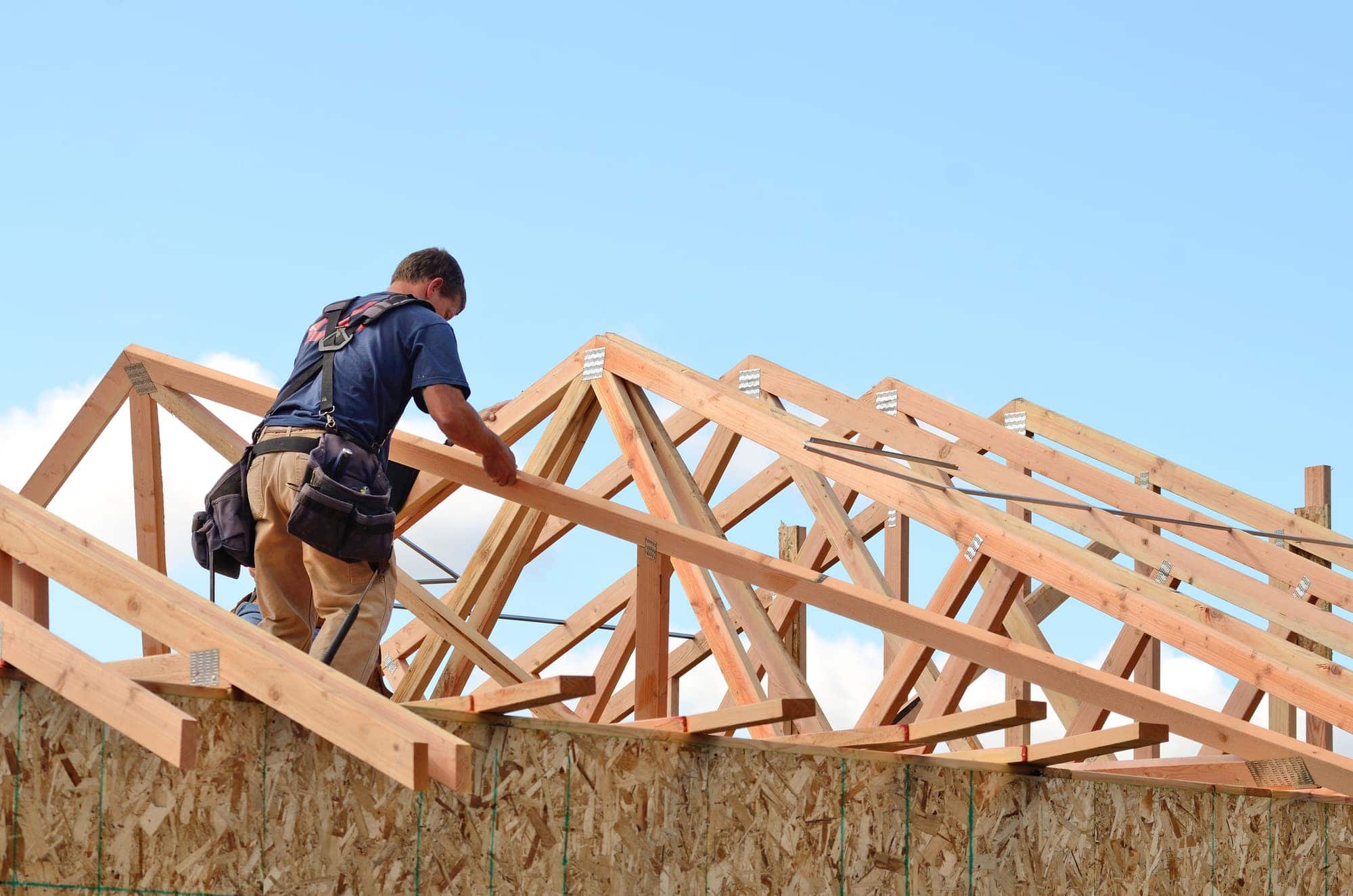Home>Home and Garden>The Secret Trick To Locating Ceiling Joists Without A Stud Finder!


Home and Garden
The Secret Trick To Locating Ceiling Joists Without A Stud Finder!
Published: January 20, 2024
Discover the ultimate guide to finding ceiling joists without a stud finder. Unlock the secret trick for precise locating! Perfect for home and garden enthusiasts.
(Many of the links in this article redirect to a specific reviewed product. Your purchase of these products through affiliate links helps to generate commission for Noodls.com, at no extra cost. Learn more)
Table of Contents
Introduction
Ceiling joists are an essential component of any home's structure, providing crucial support for the ceiling and upper floors. Understanding how to locate these joists is a valuable skill for homeowners and DIY enthusiasts alike. While traditional methods often involve using a stud finder or tapping the ceiling to listen for a solid sound, there's a lesser-known trick that can be incredibly useful for identifying ceiling joists without the need for specialized tools. This technique not only simplifies the process but also offers a sense of empowerment, allowing individuals to tackle home improvement projects with confidence.
In the following sections, we will delve into the significance of ceiling joists, explore the reasons for needing to locate them, and examine the conventional methods typically employed for this purpose. Additionally, we'll uncover the secret trick that enables you to pinpoint ceiling joists without relying on a stud finder, providing a valuable alternative for those seeking a practical and effective approach to home maintenance and improvement.
What Are Ceiling Joists?
Ceiling joists are horizontal structural members that form the framework of a ceiling. They play a critical role in providing support for the ceiling itself as well as the floors and roof above. Typically made of wood or steel, ceiling joists are installed parallel to one another and are spaced at regular intervals across the width of the ceiling. This arrangement helps distribute the weight of the structure evenly, ensuring structural integrity and stability.
In addition to supporting the ceiling, these joists also serve as a crucial element for attaching other building components, such as drywall, insulation, and lighting fixtures. Their placement and spacing are carefully calculated to meet building code requirements and ensure the overall strength and safety of the structure. Properly installed and maintained ceiling joists are essential for preventing sagging, cracking, or other structural issues in the ceiling over time.
Understanding the layout and function of ceiling joists is essential for various home improvement projects. Whether it's installing a ceiling fan, hanging a heavy light fixture, or conducting renovations that involve the ceiling, having a clear grasp of where the joists are located is fundamental. This knowledge enables homeowners and DIY enthusiasts to make informed decisions and execute tasks safely and effectively, minimizing the risk of damaging the ceiling or compromising its structural integrity.
Moreover, being able to identify ceiling joists is crucial for anyone considering modifications or additions to their home. Whether it's installing a new ceiling-mounted storage system, creating a decorative ceiling feature, or conducting repairs, knowing the precise location of the joists is essential for securely anchoring any fixtures or structures to the ceiling.
In essence, ceiling joists are the backbone of a sturdy and reliable ceiling structure, and having a comprehensive understanding of their purpose and location is invaluable for anyone engaging in home improvement or maintenance activities.
Why You Might Need to Locate Ceiling Joists
Locating ceiling joists is a fundamental aspect of various home improvement and maintenance tasks. Understanding the reasons behind the need to identify these structural components sheds light on the practical applications and benefits of this knowledge.
Hanging Heavy Fixtures
When it comes to installing heavy fixtures such as ceiling fans, chandeliers, or overhead storage systems, knowing the precise location of ceiling joists is crucial. These joists provide the necessary support to bear the weight of such fixtures, ensuring their secure attachment to the ceiling. By identifying the joists, homeowners can confidently anchor these fixtures, minimizing the risk of damage or accidents due to inadequate support.
Installing Ceiling Features
Creating decorative or functional features on the ceiling, such as suspended lighting, ornamental moldings, or overhead storage solutions, often requires a solid anchoring point. By locating the ceiling joists, individuals can ensure that these features are securely and safely installed, enhancing the aesthetic appeal and functionality of the space while maintaining structural integrity.
Conducting Repairs and Maintenance
In the event of ceiling damage or the need for repairs, knowing the position of the ceiling joists is essential. Whether it's replacing sections of the ceiling, addressing water damage, or conducting electrical work, understanding the joist locations enables targeted and effective repairs. This knowledge also facilitates the safe and accurate installation of new materials, such as drywall or insulation, ensuring that they are properly secured to the underlying structure.
Enhancing Structural Integrity
Identifying ceiling joists is also crucial for maintaining the overall structural integrity of the home. By understanding the layout and spacing of the joists, homeowners can make informed decisions when considering modifications or additions to the ceiling. This knowledge helps prevent accidental damage to the joists and ensures that any new fixtures or structures are securely attached, contributing to the long-term stability and safety of the home.
Supporting DIY Projects
For individuals engaging in do-it-yourself projects, having the ability to locate ceiling joists offers a sense of empowerment and confidence. Whether it's undertaking renovations, installing new features, or conducting maintenance tasks, knowing the position of the joists enables DIY enthusiasts to approach their projects with precision and efficiency, ultimately leading to successful and satisfying outcomes.
In summary, the need to locate ceiling joists arises from a variety of practical considerations, ranging from safety and structural integrity to the successful execution of home improvement projects. This knowledge empowers homeowners and DIY enthusiasts to make informed decisions and carry out tasks with confidence, ultimately contributing to the functionality, safety, and aesthetic appeal of their living spaces.
Traditional Methods for Locating Ceiling Joists
Traditionally, locating ceiling joists has been approached through various methods, each offering its own set of advantages and limitations. These time-tested techniques have served as go-to solutions for homeowners and DIY enthusiasts seeking to identify the position of ceiling joists without the need for specialized tools. Understanding these traditional methods provides valuable insights into the resourcefulness and ingenuity of individuals when it comes to home maintenance and improvement.
Visual Inspection
One of the simplest and most intuitive methods for locating ceiling joists is through visual inspection. By examining the patterns of the ceiling, such as the placement of nails or screws, or the presence of seams in the drywall, individuals can often discern the approximate location of the joists. In homes with exposed ceilings, such as those featuring wooden beams or paneling, the joists may be readily visible, making their identification relatively straightforward. While this method offers a quick and non-invasive approach, it may not always provide precise or reliable results, particularly in cases where the ceiling is covered with materials that obscure the joist locations.
Tapping the Ceiling
Another traditional method involves tapping the ceiling to listen for differences in sound. When tapped lightly with a knuckle or a small tool, the area above a ceiling joist tends to produce a more solid and resonant sound compared to the spaces between joists. This technique relies on the acoustic properties of the ceiling materials and the underlying joists, allowing individuals to detect variations in density and support. While tapping the ceiling can offer clues about the joist locations, it may require patience and a discerning ear, as the differences in sound can be subtle, especially in rooms with high ceilings or acoustic treatments.
Measuring from Walls
In some cases, individuals may employ measurements from the walls to estimate the position of ceiling joists. By using a tape measure and referencing known structural elements, such as wall studs or architectural features, homeowners can calculate the likely spacing of the joists across the ceiling. This method leverages the predictable layout of building components and can provide a general idea of where the joists are situated. However, it is important to note that variations in construction and building codes may lead to inconsistencies in joist spacing, potentially affecting the accuracy of this approach.
Trial and Error
For those willing to take a more hands-on approach, trial and error can be a method of last resort. By carefully drilling small exploratory holes in the ceiling and probing the underlying structure, individuals can confirm the presence of joists and determine their spacing. While this method offers a direct and definitive way to locate the joists, it also carries the risk of causing damage to the ceiling. As such, it is advisable to exercise caution and consider this approach only when other methods have proven ineffective.
In essence, traditional methods for locating ceiling joists showcase the resourcefulness and problem-solving skills of homeowners and DIY enthusiasts. While these techniques may not always offer precision or efficiency, they demonstrate the ingenuity and determination of individuals when faced with the task of identifying critical structural elements within their homes.
Read more: How To Measure A Ceiling Fan
The Secret Trick to Locating Ceiling Joists Without a Stud Finder
Amidst the conventional methods for locating ceiling joists, there exists a lesser-known yet remarkably effective trick that eliminates the need for a stud finder or the guesswork associated with traditional techniques. This secret method involves utilizing a strong magnet to pinpoint the position of the nails or screws that secure the drywall or ceiling panels to the underlying joists.
The concept is elegantly simple yet surprisingly powerful. By running a strong magnet along the surface of the ceiling, individuals can detect the metal fasteners that attach the drywall to the joists. As the magnet encounters a nail or screw, it exerts a noticeable pull, indicating the presence of the underlying joist. This technique leverages the magnetic properties of the fasteners and provides a reliable means of identifying the precise location of the joists without the need for complex tools or invasive measures.
To implement this secret trick, a neodymium magnet, known for its exceptional strength, is recommended. These powerful magnets can easily detect the metal fasteners through the ceiling material, offering a clear and tactile indication of the joist locations. By slowly moving the magnet across the ceiling surface, individuals can systematically identify the positions of the joists, marking them for future reference or immediate use in home improvement projects.
The beauty of this secret trick lies in its simplicity and accessibility. Unlike stud finders or invasive methods, the magnet technique is non-destructive and requires minimal effort, making it an ideal solution for homeowners and DIY enthusiasts. Moreover, the use of a magnet provides a tangible and intuitive experience, allowing individuals to physically sense the presence of the underlying joists, thereby enhancing their confidence in the accuracy of the identified locations.
In essence, the secret trick to locating ceiling joists without a stud finder offers a practical and empowering alternative for anyone seeking a reliable and straightforward method. By harnessing the magnetic properties of fasteners and employing a strong magnet, individuals can confidently and efficiently identify the positions of the ceiling joists, unlocking a world of possibilities for successful home improvement and maintenance endeavors.
Conclusion
In conclusion, the ability to locate ceiling joists is a fundamental skill that empowers homeowners and do-it-yourself enthusiasts to undertake a wide range of home improvement and maintenance projects with confidence and precision. Throughout this article, we have explored the significance of ceiling joists, the reasons for needing to locate them, traditional methods for identifying their positions, and the secret trick that enables individuals to pinpoint joists without the use of a stud finder.
Understanding the layout and function of ceiling joists is essential for various home improvement projects, ranging from installing fixtures and creating decorative features to conducting repairs and enhancing structural integrity. The knowledge of joist locations not only ensures the safe and secure attachment of various elements to the ceiling but also contributes to the overall stability and aesthetics of the living space.
While traditional methods such as visual inspection, tapping the ceiling, measuring from walls, and trial and error have served as go-to solutions, they may not always offer precision or efficiency. These techniques, however, showcase the resourcefulness and problem-solving skills of individuals when faced with the task of identifying critical structural elements within their homes.
The secret trick to locating ceiling joists without a stud finder, utilizing a strong magnet to detect the metal fasteners securing the drywall to the underlying joists, provides a remarkably effective and non-destructive alternative. This method offers a tangible and intuitive experience, allowing individuals to physically sense the presence of the underlying joists, thereby enhancing their confidence in the accuracy of the identified locations.
In essence, the knowledge and techniques shared in this article enable homeowners and DIY enthusiasts to approach their home improvement projects with a deeper understanding and a practical edge. By being equipped with the ability to locate ceiling joists, individuals are empowered to create safer, more functional, and aesthetically pleasing living spaces while embarking on their DIY endeavors with newfound confidence and efficiency.












